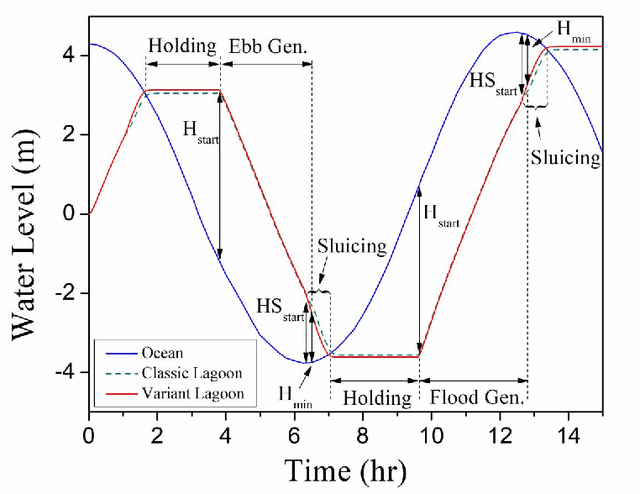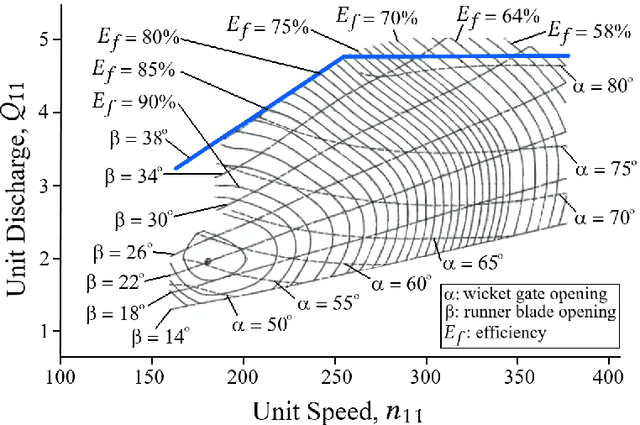Gilberto Medeiros-Ribeiro
Universidade Federal de Minas Gerais, Belo Horizonte, Brazil
Development and Validation of an AI-Driven Model for the La Rance Tidal Barrage: A Generalisable Case Study
Feb 10, 2022



Abstract:In this work, an AI-Driven (autonomous) model representation of the La Rance tidal barrage was developed using novel parametrisation and Deep Reinforcement Learning (DRL) techniques. Our model results were validated with experimental measurements, yielding the first Tidal Range Structure (TRS) model validated against a constructed tidal barrage and made available to academics. In order to proper model La Rance, parametrisation methodologies were developed for simulating (i) turbines (in pumping and power generation modes), (ii) transition ramp functions (for opening and closing hydraulic structures) and (iii) equivalent lagoon wetted area. Furthermore, an updated DRL method was implemented for optimising the operation of the hydraulic structures that compose La Rance. The achieved objective of this work was to verify the capabilities of an AI-Driven TRS model to appropriately predict (i) turbine power and (ii) lagoon water level variations. In addition, the observed operational strategy and yearly energy output of our AI-Driven model appeared to be comparable with those reported for the La Rance tidal barrage. The outcomes of this work (developed methodologies and DRL implementations) are generalisable and can be applied to other TRS projects. Furthermore, this work provided insights which allow for more realistic simulation of TRS operation, enabled through our AI-Driven model.
Prediction-Free, Real-Time Flexible Control of Tidal Lagoons through Proximal Policy Optimisation: A Case Study for the Swansea Lagoon
Jul 16, 2021



Abstract:Tidal range structures have been considered for large scale electricity generation for their potential ability to produce reasonable predictable energy without the emission of greenhouse gases. Once the main forcing components for driving the tides have deterministic dynamics, the available energy in a given tidal power plant has been estimated, through analytical and numerical optimisation routines, as a mostly predictable event. This constraint imposes state-of-art flexible operation methods to rely on tidal predictions (concurrent with measured data and up to a multiple of half-tidal cycles into the future) to infer best operational strategies for tidal lagoons, with the additional cost of requiring to run optimisation routines for every new tide. In this paper, we propose a novel optimised operation of tidal lagoons with proximal policy optimisation through Unity ML-Agents. We compare this technique with 6 different operation optimisation approaches (baselines) devised from the literature, utilising the Swansea Bay Tidal Lagoon as a case study. We show that our approach is successful in maximising energy generation through an optimised operational policy of turbines and sluices, yielding competitive results with state-of-the-art methods of optimisation, regardless of test data used, requiring training once and performing real-time flexible control with measured ocean data only.
 Add to Chrome
Add to Chrome Add to Firefox
Add to Firefox Add to Edge
Add to Edge